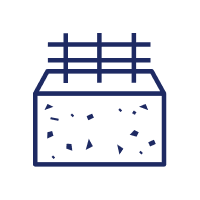
Giving your home a stunning makeover is essential for leaving an everlasting impression on the people around you. Experimenting with the colour wheel and creating textures on the walls of your home can add to uplift the cheerful feeling within us. That said, while painting is the best alternative to enhance the aesthetics of your home decor, integrating wall putty in your home refurbishing essentials ensures that their beauty prolongs.
Wall putty, white cement-based fine powder, lays down a strong foundation for the paint by offering an even and smooth surface to paint over. It is made with additional polymers and other minerals, which contribute to the velvety smoothness of painted walls.
Furthermore, it ensures that the painted surfaces of your home give out the first-day appearance throughout the year. Wall putty adds a layer of defence to them against moisture intrusion, efflorescence, and the growth of mould, to create a flawless surface in the exterior and interior of your home.
Wall putties are regarded as quite a versatile material as they can be applied to any wall, from rendered, concrete, to precast walls. They provide absolute whiteness enhancing the overall appearance of the walls.

Wall putty can be applied to both interior and exterior walls for a variety of purposes.

Wall putty enhances the life of the paint on the walls. It is suitable for all types of paint and produces a beautiful finish.

Wall putty binds strongly with the base. In fact, it improves the strength of the surface.

It protects the wall from factors like crack formation, efflorescence, flaking, mould formation, and much more.

Wall putty offers a smooth, glossy finish and imparts a sparkling whiteness to the applied surface.






Ans. Wall putty is used for the following reasons:
Wall putty has an excellent bonding property which protects the walls from the ill effects of abrasion and can help in creating a smooth surface by covering all the undulations, for a beautiful paint finish.
Ans. Wall putty and white cement are not the same. But, they are related to each other as most wall putties are white-cement based. Apart from this, wall putties are used for filling pin holes, whereas white cement is used for repairing marble tiles and sheathing roofs, walls, ceilings, etc.
Ans. The best putty for walls is JKCement’s MaxX range of wall putties. They prevent mould formation and resist efflorescence. Furthermore, these putties also ensure that the interior and exterior walls of one’s home are always smooth and glossy.
Ans. There are certain variants of wall putties, such as JKCement ShieldMaxX which is damp-resistant and suitable for application on exterior walls.
Ans. The application of primer is optional, however, in the case of white cement-based putties such as the JKCement MaxX range of wall putties, primer should be applied only after putty application.
Ans. Yes, it is necessary to apply putty before painting as it is essential for the increased paint life of the wall paint. Additionally, it equips the walls with a protective layer against abrasion, moisture, and efflorescence and levels the undulations for a smooth wall surface prior to painting.
Ans. For the wall putty to completely dry, it takes 4-6 hours.
Ans.
Ans. The right way to apply putty is:
Ans.